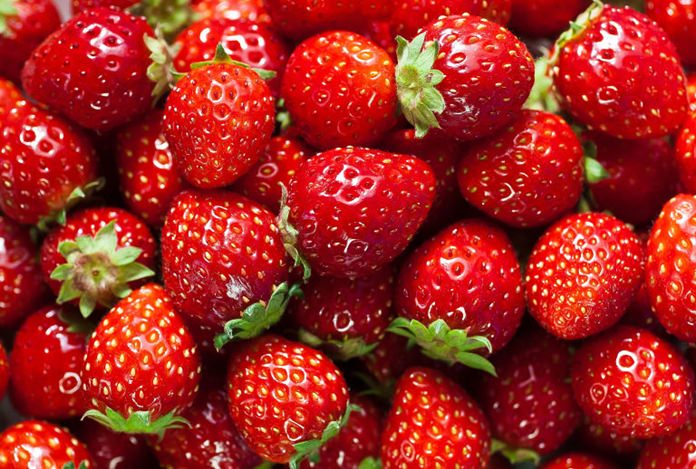
Recently I dealt with Still Life photography, and if you think it isn’t an exciting branch of photography, then think again. The following is a true story of how I took an advertising shot of a bowl of strawberries with a bottle of vodka. It is a tale of excitement and physical violence, and will hopefully remove any thoughts of Still Life photography being boring.
The concept, as agreed with the art director, was of a crystal bowl of strawberries with a bottle of vodka slightly behind it. This was to indicate this was a new strawberry vodka.
Being glassware you cannot photograph the items with lighting from the front, but generally from behind. In this case I decided to shoot with the light coming from underneath.
So to the mechanics of it all. I placed a sheet of glass over two stands, one at each end. Under the glass I placed a flash head, as this would be the source of ‘bottom’ lighting. I then unrolled a few meters of the two meters wide black background paper from the roll holder on the wall. Now I had a seamless background in black, on which to place the glass bowl and the vodka bottle.
The camera used was going to be a Hasselblad 6×6 and this was mounted on a Manfrotto heavy duty tripod. By about mid-day the set-up was pleasing and it was decided we would break for lunch and spend the afternoon shooting.
Sounds easy, but in actual fact, to get the best placement is a case of trial and error, taking Polaroids as we went to check the attractiveness of the placings.
Now came the lighting, which was from underneath the glass plate. Carefully cutting out two circles, one for the bowl and the other for the bottle, as we had already decided where exactly these two items would sit, the unrolled section with two holes was then placed on the glass and the bowl and vodka bottle placed on the cut out circles.
Now it was time for the strawberries. For a shot like this, any punnet from the market will not do. These strawberries have to be perfect, without any blemishes. Three punnets later we had enough to fill the crystal bowl and then spray them with glycerin before being arranged in the bowl, making them look as if they were just picked with morning dew on them.
Now comes the lighting, obviously one of the most important parts of the entire exercise. We had two lights and a reflector. One flash head was positioned under the glass where the two circular cut-outs were. The second flash head was directed at the background paper behind the vodka and the reflector was in front to shine some light back on to the bowl and bottle.
Now is the time to balance the strength of the flash heads to each other, and to do this we used ‘modelling’ lights. These are tungsten lights which are low power, compared to the flashes, but can show where the shadows and highlights will fall. They also produce heat.
Now I began to look towards the final images, taking some Polaroids with the Hasselblad. This is a very exacting time with much study to see just how the relativity between the light sources affects the final commercial image.
It was also at this time, while bending over the Hasselblad on the tripod and making adjustments that I heard a loud crack and something hit me across the back of my head, knocking me to the floor half stunned.
When I opened my eyes, the flash heads were on their sides and the crystal glass, previously full of strawberries, was on the floor. And the glass plate was broken in two. I was clutching the Hasselblad, while my assistant was clutching the vodka bottle!
We pieced together what had happened. Prolonged use of the modelling light under the glass plate had made for a reasonably high temperature and fractured the glass. As the glass sank into a V shape it pulled the roll of background paper off the roll holder which promptly came down on my head.
We ate the strawberries and drank the vodka.
 |
 |
 |





